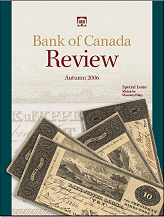Bank of Canada Review - Autumn 2006
Available as:
PDF
Cover page
The "pretended" Bank of Upper Canada — Kingston (1819-22)
The note is part of the National Currency Collection of the Bank of Canada.
Photography by Gord Carter
